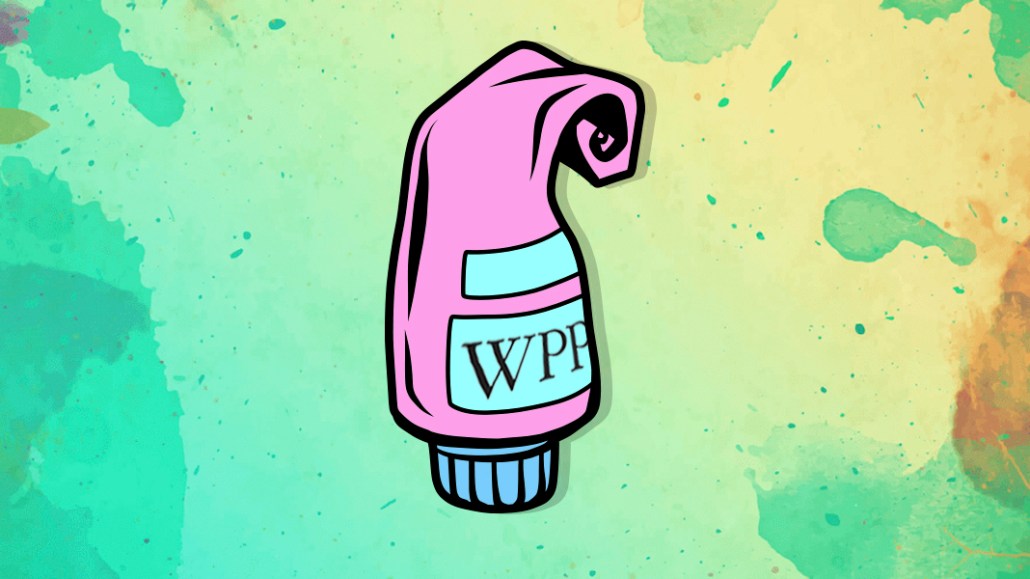Save 50% on a 3-month Digiday+ membership. Ends Dec 5.

In 2017, WPP, the bellwether of the ad industry, had its worst year for revenue growth since 2009, as the agency network wrestled with issues that have impacted every major network to some degree.
Upheaval in the way advertisers spend their money rocked the world’s biggest holding group by sales in 2017. CEO Sir Martin Sorrell said it was “not a pretty year,” but the future for his business looks even bleaker. The fortunes of the big agencies are viewed as the doyen for the global economy, yet the biggest ad network is seemingly collapsing as the market holds up. WPP is facing an existential crisis on all fronts.
It’s not just WPP. Omnicom, Publicis, IPG and Dentsu have all struggled due to several factors. The big agency groups’ struggles aren’t just a symptom of the transparency crisis that has engulfed the industry. There’s a move away from delineated channel solutions to more holistic customer experiences and an increasing focus on measurable results and profit margins. Together, these factors are reducing the marketing spend and the margin that agencies can retain.
Here are five structural challenges that WPP’s earnings show agency bosses must now face.
Agencies need to reinvent themselves
Agencies are durable businesses, and flexible ones. But as they have flexed with marketing trends, their costs have ballooned. Sorrell singled out the the “long-term impact of technological disruption” on WPP’s performance. What the comment suggests is WPP and its peers will continue to seek out fast-growth, cutting-edge technology services for the marketing industry to remain competitive. The growing risks of disintermediation, coupled with the threat from consultancies and from more agile, digital-focused mid-tier players suggest there is likely to be no change in appetite for M&A.
Arguably WPP is acting faster than some of the other holding companies to reduce its cost base by merging agencies and reducing management and back-office overhead. Evolving the service offer of its agencies to give clients the more integrated, “contemporary solutions they want will be harder however,” said Tristan Rice, partner at M&A advisory SI Partners. This transition is like trying to turn multiple supertankers, Rice continued, but it also brings all its “supertankers into closer competition with each other.”
Clients are taking control
Like the changing of the seasons, agency bosses are (again) downplaying the threat of advertisers in-housing media management and content production. Beneath all the surveys and headlines on marketers doing more for themselves lies something more amenable for agencies — if they can get the business model right. Yes, marketers are doing more for themselves, but in many cases, agencies are helping them do it as they try and shift their business models toward the more consultative end of the marketing mix. Speaking to analysts about WPP’s results, Sorrell rattled through the media, data, content, production and programmatic capabilities his agencies have helped advertisers set up over the last year. Conversely, recent WPP data indicates that programmatic and content studios may be going in-house as much as “out-house, revealed Sorrell. “The trend is not clearly defined,” opined the ad veteran. “It’s certainly not clearly defined as in-house.”
Transparent ad buying is being demanded
The prevailing thought among many senior marketers now is “where there’s a mystery, there’s a margin.” After 18 months of suspicion and scrutiny of those businesses paid to manage their ads, advertisers are demanding those players come clean about what’s been going. As Ian Armstrong, the global head of advertising at Jaguar Land Rover, explained: “Subsequent analysis will show whether we’re paying too much for something, and it may be that we’re just not getting the return that we expected, which might be a function of paying too much in the first place for ads or it might be a symptomatic of how the technology works.”
As marketers like Armstrong uncover more of the undisclosed rebates and other hidden fees being made from their money, they are trying to either claw back some of that money or limit their agency’s ability to do strike similar arrangements in future, stunting long-term growth if the business can’t come up with an workaround. An example of this shift in action is at Omnicom’s trading desk Accuen; in its fourth quarter, the revenue from the trading desk slumped by $12 million (£8.7 million) worldwide as advertisers shifted to disclosed programmatic buying models.
The consulting firms aren’t coming, they’re here
Sorrell tried to quell analyst concerns that WPP’s dire 2017 was at least in part down to the likes of Accenture and Deloitte. Of the 80 accounts WPP went head-to-head with consulting firms for last year, it “had a win/loss ratio of about 50 to 30,” claimed Sorrell. Those wins, weren’t “significant in the realm of things,” said Sorrell. But Accenture, Deloitte and IBM aren’t interested in competing for advertising and media accounts as they are now. They see upside at the consultancy and technology ends of the advertising spectrum. It’s why Unilever is working with the digital specialists at IBM iX to test blockchain’s ability to weed out fraud from the advertiser’s sprawling supply chain. And it’s why consulting firms drove M&A spent a collective $1.2 billion in agency acquisitions, according to marketing consultancy R3, while the big networks struck fewer deals.

The duopoly effect is real
WPP brushes off the idea that the duopoly is a threat. After all, WPP spends a lot with Google and Facebook. Of the $75 billion (£54 billion), WPP pumped into media in 2017, $7 billion (£5.1 billion) went to the duopoly. While both Google and Facebook have always insisted that they have no designs on nudging agencies from the view of advertisers, many big brands like Heineken, Adidas and L’Oréal already work directly with those companies. In turn, some advertisers like JLR are starting to factor that burgeoning relationship with Google and Facebook into their new agency models, as the advertiser recently alluded to.

More in Media

Ad Tech Briefing: The Programmatic Governance Council is a bid to reset power dynamics
As tensions over TID and GPID peak, Tech Lab is convening a council to hash out commercial ground rules.

Newsweek is building an AI Mode-like experience to customize homepages for readers
Newsweek is building an AI homepage modeled after Google’s AI Mode to increase engagement and offset declining search referrals.

How AI’s hit to publisher traffic is quietly rewiring media M&A
Publishers’ AI-driven traffic declines are cooling M&A, stalling deals and lowering valuations. Some analysts are optimistic about 2026.





